Discovering Top Forex Robot Traders for Success
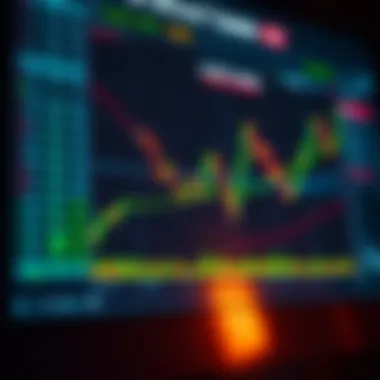
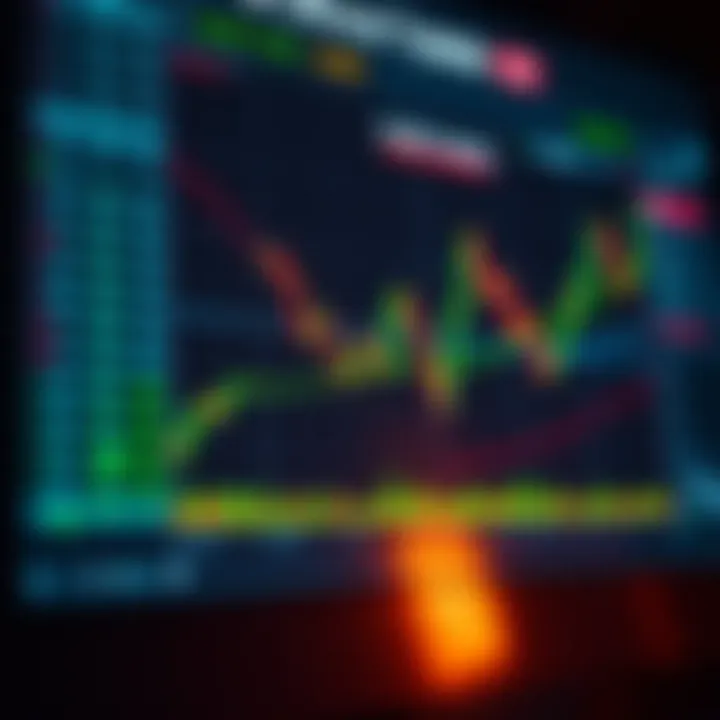
Intro
In the fast-paced world of foreign exchange trading, leveraging technology has become a necessity rather than a luxury. The rise of forex robot traders, or automated trading systems, has made its mark. Traders, whether amateur or seasoned, have started to recognize the potential of these programs, which promise to analyze market trends and execute trades autonomously. But how do these systems truly function? What sets the best forex robots apart from the rest?
Understanding the nuances of forex robot traders is essential to navigate this landscape effectively. This article will shed light on the mechanics of these trading systems, assess their performance, and present valuable insights on how to select the right one for individual trading goals.
Through our comprehensive analysis, we'll delve into the intersection of technology and finance, revealing not just the benefits but also the limitations of automated trading. For those keen on making informed financial decisions, this exploration is tailored to provide clarity and direction.
Key Concepts and Definitions
Overview of Investment Terms
Before diving into the intricacies of forex trading systems, it's crucial to familiarize oneself with some fundamental investment terms that often surface in discussions about automated trading. Here are a few important ones:
- Forex (Foreign Exchange): The global marketplace where currencies are traded.
- Pips: The smallest price movement in a currency pair.
- Leverage: The ability to control a larger position with a smaller amount of capital.
- Spread: The difference between the buying and selling price of a currency pair.
- Slippage: Occurs when a trade is executed at a different price than expected.
Each of these terms is integral to understanding not just how trading operates, but also how automated systems function within this space.
Significance of Understanding Financial Terminology
It's easy to feel overwhelmed by jargon in the financial sector. However, grasping these concepts enhances a trader's ability to make informed decisions. A clear understanding of terms like pips and leverage informs how one might interpret profit potentials or risks associated with trades executed by automated systems. This knowledge becomes especially relevant when evaluating the effectiveness of a forex robot.
Equipped with this foundational understanding, traders can better navigate their options in the landscape of automated forex trading. This understanding opens doors to more complex strategies and the potential for better outcomes.
Expert Insights and Advice
Investment Strategies for Beginners
For those who are just stepping into the forex arena, starting can feel like treading water in a sea of noise. Here are a few simple strategies to consider:
- Start with a Demo Account: Before risking real money, familiarize yourself with the trading platform and practice trading with virtual currency.
- Keep it Simple: In the beginning, focus on one or two currency pairs instead of spreading yourself too thin.
- Understand Your Robot: If you choose to use a trading robot, take the time to learn about its strategies and performance metrics.
By adhering to these foundational strategies, beginners can carve a more assured path forward.
Advanced Techniques for Seasoned Investors
For the more experienced traders, here are some advanced techniques they might consider:
- Utilize Backtesting: Analyze how your trading robot would have performed historically under similar market conditions.
- Diversify Your Strategies: Avoid putting all your eggs in one basket by employing different trading robots that focus on various strategies.
- Fine-Tune Risk Management: Adjust your risk levels according to market conditions, ensuring that you're not overexposing your capital.
These methods offer seasoned traders opportunities to refine their approach and enhance their trading outcomes.
"Understanding the tools at your disposal, from forex robots to traditional methods, is the key to successful trading."
Finale
In the vast and dynamic world of forex trading, the integration of technology exemplified by forex robots holds tremendous potential. Those who take the time to understand its nuances—armed with the right terminology and strategies—can position themselves for success. The essence of trading lies not merely in the execution of trades but in the informed decisions made before those trades are executed.
Understanding Forex Trading
In the realm of finance, forex trading stands as a pivotal activity that draws interest from both novice and seasoned investors alike. Understanding forex trading is essential, as it provides a foundation for grasping the mechanics behind one of the most liquid and dynamic markets in existence. This section will unravel the basic concepts that govern forex trading, the players involved, and the strategies that can enhance trading effectiveness.
Definition and Fundamentals of Forex Trading
Forex trading, also known as foreign exchange trading, refers to the process of buying and selling currencies through currency pairs. Each currency pair represents the value of one currency relative to another. For instance, in the pair EUR/USD, the euro is the base currency while the US dollar is the quote currency. If the price of this pair moves up, it means that the euro has strengthened against the dollar.
The forex market operates 24 hours a day, five days a week, allowing for trading across different time zones. This continuous operation provides ample opportunity for traders to engage in the market based on their personal or institutional strategies. Major players include central banks, financial institutions, hedge funds, and retail traders. Due to its global nature, forex trading boasts a daily trading volume that exceeds $6 trillion, making it the largest financial market in the world.
Market Structure and Participants
To truly grasp forex trading, one must understand its market structure. The forex market is decentralized, meaning there is no central exchange. Instead, the trading occurs over-the-counter (OTC). Participants in this vast network include:
- Banks: Both central and commercial banks influence currency prices through their monetary policy and trading.
- Investment Firms: Hedge funds and investment banks trade on behalf of their clients, executing large transactions that can impact market movements.
- Corporations: Businesses engaged in international trade participate in forex to manage their currency exposure.
- Retail Traders: Individual investors who engage in trading for profit, often using online platforms.
The market operates through a system of liquidity providers and market makers, ensuring that there are always buy and sell prices available for traders.
Common Trading Strategies
Understanding effective strategies is crucial for successful forex trading. Different traders employ unique strategies based on their risk tolerance and objectives. Below are some common approaches:
- Scalping: This involves making numerous short-term trades to capture small price changes. Scalpers aim for quick profits, often holding positions for mere seconds or minutes.
- Day Trading: Day traders open and close positions within the same trading day, avoiding overnight risks. They rely heavily on analysis, anticipating market movements based on various indicators.
- Swing Trading: This strategy allows traders to hold positions for several days or weeks, aiming to profit from price swings. Swing traders often focus on chart patterns and technical analysis.
- Position Trading: A long-term approach where traders maintain positions over months or years, relying on fundamental analysis to determine currency valuations.
Each of these strategies has its own merits and risks, suiting different types of traders. By applying these strategies effectively, an investor can enhance their understanding and execution of forex trading, laying the groundwork for engaging with forex robots in the future.
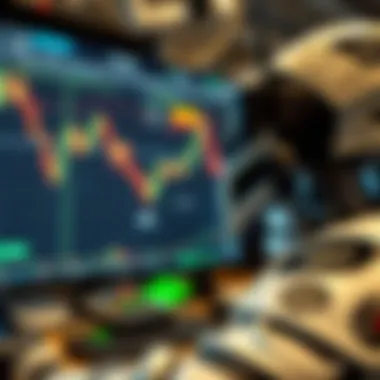
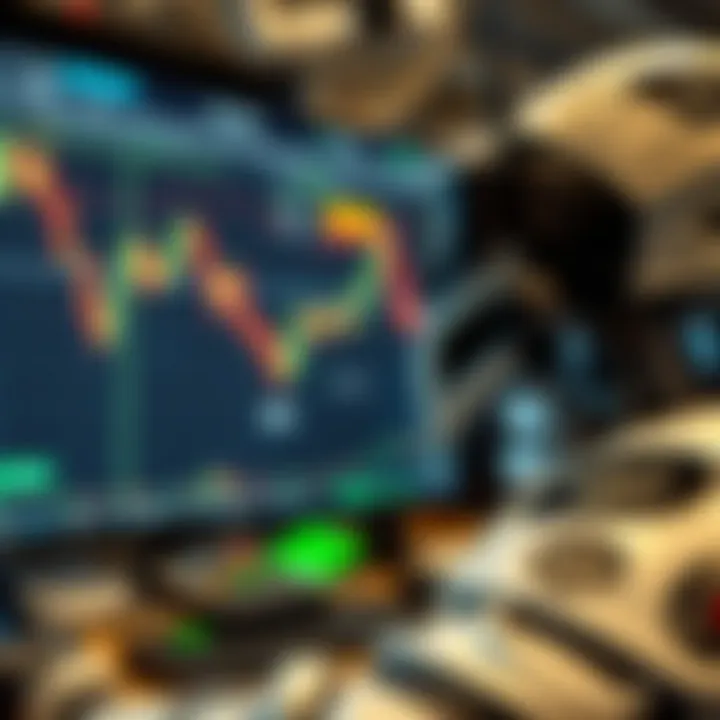
The Role of Forex Robots in Trading
The rapid evolution of technology has fundamentally altered the landscape of forex trading. At the forefront of this change are forex robots, which have emerged as vital tools for both novice and seasoned traders. Their importance lies not only in simplifying trading processes but also in enhancing efficiency and decision-making. With the ability to analyze vast amounts of market data the blink of an eye, these automated systems have made their mark in a market notorious for its volatility and unpredictability. The deepest depth of their impact arises from the way they take emotion out of trading, allowing strategies to be executed with precision.
What are Forex Robots?
Forex robots, known formally as Expert Advisors (EAs), are software programs designed to automate the trading process in the forex market. These programs are built on algorithms that evaluate market conditions and execute trades on behalf of the user. Their design can range from simple scripts to complex systems integrating advanced trading strategies.
Essentially, these robotic traders can monitor various currency pairs around the clock, ensuring that no profitable opportunity slips through the cracks. Once programmed, they can execute trades at lightning speed without the emotional interference that often plagues human traders. In practical terms, a forex robot can execute trades in less time than it takes to brew a cup of coffee. Their rise in popularity coincides with developments in technology, signaling a shift towards a more automated approach in the trading arena.
How Forex Robots Operate
The operation of forex robots boils down to a few key functionalities. First, they gather and analyze real-time market data, seeking patterns and signals that indicate profitable trading opportunities. This involves scrutinizing economic indicators, price trends, and other critical market events. Once potential trades are identified,
- Execution: Forex robots can automatically execute trades based on pre-set criteria. This means they can enter or exit the market without human intervention, which reduces response time dramatically.
- Risk Management: Many forex robots come with built-in risk management features that help traders set their stop-loss and take-profit levels, thereby safeguarding their investments.
- Customization: Traders can often customize the algorithm or choose from a variety of strategies that align with their specific trading goals.
In essence, the operational prowess of these robots allows for a balance between risk and reward, enabling users to navigate the intricate forex markets more effectively.
Types of Forex Robots
Forex robots are a diverse bunch. They can be categorized based on their approach and functionality. Some prevalent types include:
- Scalping Robots: These are designed for high-frequency trading, often executing dozens of trades in a single day. Their goal is to capitalize on minute price fluctuations.
- Trend-Following Robots: These systems focus on identifying and following market trends. They work under the premise that an existing trend is likely to continue, at least for a while.
- News Trading Robots: These robots take advantage of market volatility during economic news releases. They are programmed to react swiftly to significant events, making them suitable for traders who want to capitalize on news-related volatility.
- Grid Trading Robots: These employ a unique strategy that involves placing buy and sell orders at set intervals around a fixed price, essentially creating a grid. This can be useful in volatile markets where prices fluctuate considerably.
By understanding the various types of forex robots available, traders can make informed decisions based on their trading style and the market conditions they prefer to navigate.
Evaluating the Performance of Forex Robots
Assessing the performance of forex robots is like scrutinizing the engine of a finely-tuned car; you want to ensure that everything runs smoothly, is efficient, and can handle the road ahead without breaking down. This section delves into crucial aspects that will help investors discern how effective these automated trading systems are in the dynamic landscape of forex trading. With the right metrics and understanding, traders can avoid some costly mistakes while making informed decisions that align with their financial goals.
Key Performance Indicators (KPIs)
Key Performance Indicators, or KPIs, serve as benchmarks in evaluating the effectiveness of forex robots. A trader won't be driving blind; instead, they will rely on data points that give them insight into how the robot performs under different trading conditions. Some essential KPIs include:
- Return on Investment (ROI): This metric allows traders to see how much profit a robot generates relative to the amount invested. A higher ROI signifies more effective trading strategies.
- Maximum Drawdown: This is the measure of the largest drop from a peak to a trough in the value of an investment portfolio. It’s crucial for understanding the risks associated with a robot; a small drawdown is more favorable, while a large one could ring alarm bells.
- Win Rate: The percentage of profitable trades out of the total number of trades. A high win rate can provide confidence, yet it is important to look at this figure in conjunction with the risk involved.
Using these indicators, traders can build a clearer picture of whether a forex robot suits their needs, allowing them to make more informed choices based on empirical data rather than just hype or marketing claims.
Backtesting Results and Reliability
Backtesting results are the bread and butter of evaluating a forex robot’s reliability. It’s akin to a dress rehearsal before the big performance, offering a glimpse into how a robot would have fared in past market conditions. By using historical data, traders can examine several critical factors:
- Performance Under Different Market Conditions: This analysis can reveal if the robot is versatile enough to handle trends, consolidations, and fluctuations in the market.
- Timeframes Utilized: Not every robot will perform equally well across various timeframes. Seeing how a robot behaves in both short and long-term trading can provide a comprehensive understanding of its adaptability.
It’s crucial to remember that while excellent backtesting results can be enticing, they are not a guarantee of future performance. Market conditions constantly change, and past results should be viewed as just one piece of the puzzle.
Risk Management Considerations
When dealing with forex robots, it is vital to have a solid understanding of risk management. Just as a good captain doesn't sail without a map, a prudent trader shouldn't deploy a forex robot without a plan for managing risk. Here are key considerations:
- Stop-Loss and Take-Profit Orders: These tools limit potential losses and lock in profits, ensuring that a trader doesn’t emotionally intervene when the market turns against them. A robot that uses effective stop-loss strategies is less likely to experience catastrophic drawdowns.
- Position Sizing: Understanding how much capital to allocate to each trade is essential. Robots with adjustable position-sizing algorithms can help maintain a good balance between risk and return.
- Diversification: Relying on a single trading strategy can be risky; diversification in trading strategies or currencies can be wise. A robot that incorporates various strategies may provide a buffer in volatile market conditions.
Investing in forex trading is not for the faint of heart; having the right tools and information is essential for success.
For further insights, visit Investopedia or explore discussions at reddit.
Top Forex Robot Traders in the Market
The realm of Forex trading isn’t just about gut feelings and moving averages anymore; it's about precision and technology. The emergence of Forex robots has changed the game for traders. These automated systems have become crucial allies in a market so fast-paced that one blink could mean the difference between profit and loss. This section zeroes in on the top Forex robot traders in today’s market, shedding light on the benefits they offer and what you should consider when venturing into this automated world.
Comprehensive Reviews of Leading Forex Robots
When navigating through the myriad of Forex robots available, it’s vital to have a clear lens on which ones stand out. Each robot features unique algorithms, trading strategies, and levels of support. For instance:
- Forex Fury: Highly regarded for its user-friendly interface and robust performance, it employs a different strategy geared toward scalping for quick profits.
- GPS Forex Robot: Known for its accuracy, its unique selling point lies in its ability to adjust to market trends, something that can set it apart in volatile conditions.
- Forex Diamond: This robot combines multiple strategies for a more diversified approach, which can help reduce risk while optimizing returns.
It’s crucial to examine not only the performance results but also the strategies these bots employ. Statistical data regarding past performance—such as percentage of profitable trades and maximum drawdown—should guide your decisions.
Comparison of Features and Pricing
Price doesn’t always equate to quality, but it does play a pivotal role in your selection process. Forex robots can range from a modest monthly subscription to several thousand dollars for premium services. Consider the following factors when weighing options:
- Features: Look for robots that provide real-time analytics, user customization options, and backtesting functionalities. Some offer demo versions to enable you to test their performance free of risk.
- Pricing Models: While some software operates on a one-time purchase model, others may have subscription fees. Ensure you know whether updates are included.
- Customer Support: Since Forex trading can be complex, a strong support system is crucial. Check if the provider offers 24/7 assistance, tutorials, and community forums.
User Testimonials and Feedback
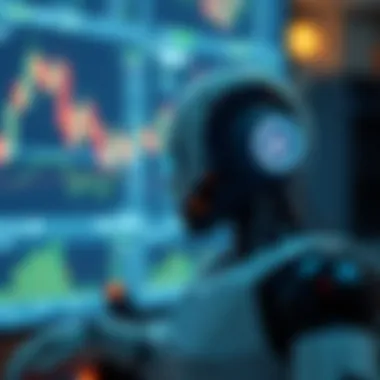
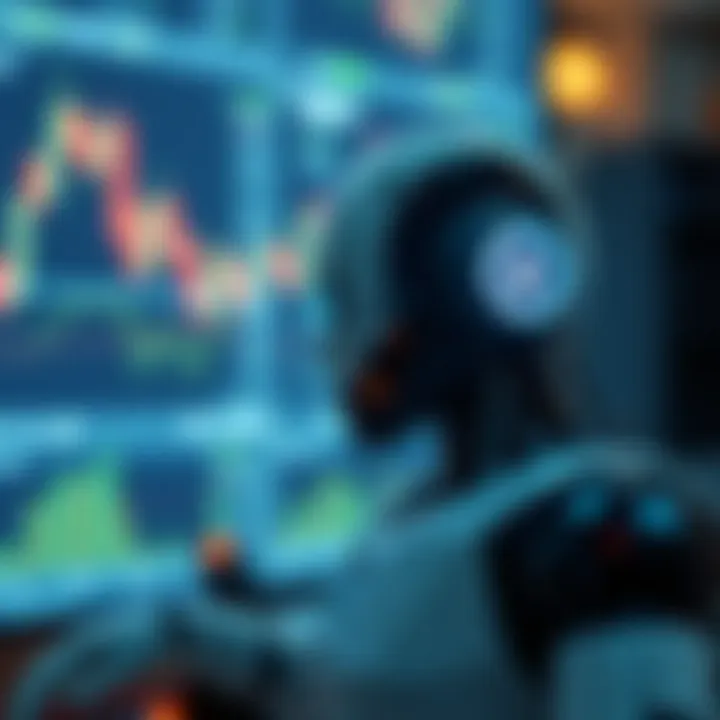
Firstly, real-life feedback from users can give an invaluable perspective that numbers alone might not convey. Platforms like Reddit and trading forums often host discussions and testimonials from users sharing their experiences with various Forex robots. Look for common threads in these discussions:
"I was skeptical at first, but using the GPS Forex Robot, I noticed a significant decrease in my emotional trading. The strategy it uses makes sense to me now."
Positive reviews often highlight:
- Ease of Use: How simple is the setup process?
- Consistent Results: What are the experiences with profitability?
- Adaptability: How well does it perform in varying market conditions?
Conversely, pay attention to the red flags, such as users reporting losses without recourse or robots not being true to their claims. Engaging with community feedback can reveal insights that raw data might obscure.
Advantages of Using Forex Robots
The appeal of utilizing Forex robots is immense, given the fast-paced nature of this market. Many traders are eager to find ways to gain an edge while minimizing human error. This section will explore several significant advantages that come with using these automated trading systems.
Automated and Efficient Trading
One of the standout benefits of Forex robots is their ability to trade automatically. Unlike humans, these systems can operate 24/7, which means they are on the job even when the trader is asleep or busy with other activities.
Just imagine having a tireless assistant that never needs a coffee break. Forex robots analyze market conditions, detect opportunities, and execute trades much faster than a human could ever hope to. They are designed to follow specific trading algorithms, allowing them to adapt swiftly to market changes. This speed and efficiency significantly enhance the chances of capitalizing on profitable trades. Moreover, because they don’t suffer from fatigue or distractions, Forex robots maintain a level of discipline that is often difficult for human traders to sustain, especially during high-pressure scenarios.
Reduction of Emotional Trading Decisions
Trading in the Forex market can be an emotional roller coaster. Fear and greed can easily cloud judgment, often leading to poor decision-making. Forex robots eliminate this emotional aspect, sticking rigidly to their programming regardless of market pressures.
Consider this: Humans frequently hesitate when faced with a significant decision or react impulsively in moments of potential loss. Forex robots, on the other hand, operate based on data and predefined metrics. They assess risks and make trading decisions based on logical analysis alone, thereby enhancing trading consistency. This objectivity can shield novice traders, who might otherwise get swept up in the emotional tides of the market, from making detrimental choices.
Access to Advanced Analysis Tools
Forex robots frequently come equipped with sophisticated analytical capabilities that outstrip what a typical trader can achieve on their own. These systems can integrate various indicators, news feeds, and even social sentiment analysis to deliver real-time insights that inform trading strategies.
Utilizing advanced statistical models and machine learning, Forex robots can sift through vast amounts of data with ease. This capability allows them to identify patterns and trends that a human might overlook. By leveraging these advanced analysis tools, users can make more informed trading decisions, ultimately leading to more successful outcomes over time.
"The most reliable trading strategy is based on facts; having a robot navigate through the clutter is invaluable."
Challenges and Limitations of Forex Robots
In the complex world of forex trading, while robots present significant advantages, they come with their own set of challenges and limitations that every investor must consider. It’s essential to comprehend these factors, as they can substantially affect trading outcomes and investment strategies. Being aware of potential drawbacks helps traders better prepare and adapt their approaches when engaging with automated systems.
Market Volatility and Unpredictability
Forex markets are known for their fluctuations. Prices can change in a blink. News regulation changes, economic indicators, or unexpected global events can lead to significant price swings. For forex robots, such volatility can spell trouble. These automated systems often rely on historical data to make decisions. If a sudden market shift occurs, the robot may struggle to react appropriately. This is where the magic turns into mayhem.
- Inherent Risks: Forex robots cannot foresee breaking news events—like a sudden geopolitical crisis or a significant economic report. A market that swings wildly can make previously successful trading strategies ineffective.
- Slippage Issues: During high volatility, trades may be executed at worse-than-expected prices due to slippage, leading to unexpected losses.
For instance, imagine a trader employing a robot based on historical trends during a stable economic period. Then, boom! A sudden declaration from a central bank shakes things up. The robot, influenced by past data, might not adapt to the new landscape, leading to unnecessary losses.
"A good trader knows when to follow the robot's advice and when to trust their gut."
Over-Reliance on Technology
While technology can make things easier, there’s a risk in relying too heavily on these tools. Many traders believe that once they set their forex robot, their work is done. But that isn’t always the case. Over-reliance can lead to several pitfalls:
- Ignoring Market Analysis: When traders give too much trust to robots, they may neglect to perform their own market analysis. Important insights can slip through the cracks as they lean on automation for trading decisions.
- System Malfunctions: Like any piece of technology, robots can fail. A glitch can lead to missed opportunities or mishandled trades, resulting in financial repercussions.
A practical approach can involve combining automation with personal oversight. Viewing the robot as an assistant rather than a complete replacement for human decision-making is a healthier mindset.
Need for Regular Monitoring and Adjustment
Though forex robots have the potential to make trading easier, ongoing monitoring is crucial. The market isn’t static; it’s dynamic. What works today might not work tomorrow. Here are some aspects to keep in mind:
- Performance Tracking: It's important to check the effectiveness of your forex robot regularly. Just because it was profitable last month does not guarantee continued success. If performance dwindles, adjustments may be necessary to keep losses at bay.
- Adaptive Strategies: Changes in market conditions may require re-evaluating the strategies implemented by the robot. A strategy that capitalized on previous market conditions may not be viable anymore. Continual education and adaptation can be key players in ensuring long-term success.
In short, even though forex robots streamline many processes, relying on them exclusively is a gamble. Regular oversight and adjustments are paramount to staying ahead in the ever-evolving forex landscape.
For further reading on the challenges faced by forex traders, check out resources such as Investopedia and Forex Factory.
By keeping these challenges in mind, traders can navigate the complexities of using forex robots more wisely, combining the best of technology with the nuances of human insight.
Selecting the Right Forex Robot
Choosing the right forex robot can feel like navigating a labyrinth. With a plethora of options available, the challenge is not just about finding any robot that trades, but one that aligns with your particular needs and goals. A suitable forex robot can make a significant difference in your trading performance—turning the tide in your favor when executed correctly. The impact you can achieve from automation means that understanding what you want and what is on offer is essential.
Assessing Personal Financial Goals


Before diving headfirst into the sea of available forex robots, it’s crucial to take a step back and assess your own financial objectives. Are you looking for supplementary income, or are you more interested in long-term growth? Not every forex robot is made equal; they cater to different risk appetites and trading styles. Do you perceive your investment as a side hustle to earn some extra cash, or are you digging in for a full-fledged investment career?
Here are some important questions to mull over:
- What is your capital? Starting with a greater amount might give a robot the room it needs to maneuver successfully, while smaller sums can strain its strategies.
- What returns are you expecting? Understanding your realistic expectations will help in selecting a robot that has a track record for achieving such returns.
- How much risk can you tolerate? Knowing your risk tolerance will enable you to pick a robot designed for your comfort level—some are built to chase high returns but at a steeper risk.
Take a moment to rank these priorities; this will guide you as you narrow your choices in line with your aspirations.
Understanding Different Trading Styles
Once you've established what you want out of forex trading, it’s time to delve into your trading style. There’s no one-size-fits-all in this game; whether you're a trend follower, a scalper, or a swing trader, each style requires specific features from a robot to thrive. Each trading style has its nuances, which imply different needs.
- Scalping: This style focuses on small price movements and requires bots that can execute trades in no time. Speed is of the essence here, so look for robots optimized for high-frequency trading.
- Day Trading: If you prefer to hold trades within the day and avoid overnight risk, robots tailored for day trading strategies will suit you. These often come with settings to close trades before the market closes.
- Swing Trading: For those who like to capture larger price shifts over several days, selecting a robot that accommodates longer trade hold times might benefit you.
By understanding your preferred trading style, you can zero in on a robot that aligns seamlessly with how you plan to engage with the forex market.
Evaluating Broker Compatibility
Selecting a forex robot also means ensuring that the robot is compatible with the broker you plan to use. It’s a common pitfall: investing in what seems like a top-notch robot only to find out later that it doesn’t play well with your chosen trading platform. Not all brokers are created equal, and the last thing you want is to hit a wall after making every decision and investment.
Here’s what you should consider:
- MetaTrader Compatibility: Check if the robot works with platforms like MetaTrader 4 or MetaTrader 5, as these are widely used among forex traders.
- Spreads and Commissions: Look at how the broker's fee structure will affect your trading performance. High spreads can eat into profits.
- Regulation and Reputation: Make sure both the robot and broker are reputable. A bot’s performance means little if the broker is not reliable.
Being meticulous about broker compatibility might save you headaches down the line. A well-performing forex robot is only as good as the environment it operates in.
Choosing the right forex robot is not merely an exercise in picking software; it's a combination of laying out personal goals, understanding diverse trading styles, and ensuring seamless compatibility with your broker. Approaching selection with a clear lens can help you cut through the clutter and focus on what truly matters.
Future Trends in Forex Trading Automation
Forex trading is undergoing significant transformations, particularly with the advent of technology that continually enhances automation. Understanding the future trends in forex trading automation is crucial for traders looking to stay ahead of the curve. The automated systems facilitate not only trading efficiency but also the integration of innovative technologies to better understand market movements.
Integration of Artificial Intelligence
The infusion of artificial intelligence within forex trading isn’t just a passing trend; it’s paving the way for more sophisticated analytical tools. AI algorithms can process vast amounts of market data in real time, allowing traders to make decisions backed by precise analysis rather than instinct. With machine learning capabilities, these systems can improve their predictions based on past performance, adapting to shifts in market behavior.
For traders, this means an evolving landscape where the machines do the heavy lifting, analyzing fluctuating market conditions around the clock. In effect, traders can gain insights and information that were previously inaccessible. As a result, the reliance on AI is becoming ubiquitous among professional traders, enhancing their ability to optimize trading strategies effectively.
Emerging Technologies in Trading Platforms
Various emerging technologies are giving rise to innovative trading platforms that create seamless and intuitive trading experiences. Blockchain technology is one such advancement, presenting a solution for enhancing transaction transparency and security. Many platforms are integrating blockchain to provide decentralized trading experiences, reducing the occurrence of fraud and increasing trust among users.
Moreover, the incorporation of augmented reality (AR) and virtual reality (VR) could change how traders interact with data. Imagine analyzing complex forex charts in a 3D environment, which could provide deeper insights than traditional 2D interfaces. These technologies not only give traders enhanced visualization tools but also immerse traders in an engaging environment for decision-making.
Regulatory Developments Impacting Automation
As the landscape of forex trading automation evolves, regulatory frameworks will play an increasingly important role. Authorities are becoming more vigilant about automated trading practices as they can lead to unforeseen market volatility. Regulations focusing on transparency and accountability are expected to tighten, affecting how forex robots operate.
Traders must, therefore, stay informed about these developments, as compliance will be crucial not just for legality but also for maintaining a competitive edge in the market. The dynamic nature of these regulations means that continuous learning and adaptation are essential for traders utilizing automated tools.
Keeping an eye on regulatory changes helps traders align their strategies accordingly, ensuring they remain compliant while optimizing performance.
In summary, as technology evolves, so does the world of forex trading automation. The incorporation of AI, innovative trading platforms, and regulatory adjustments signals a future where automated trading is more powerful, efficient, and customer-oriented. For those keen on navigating this realm, it’s imperative to not only embrace these tools but also to understand the trends shaping the future of forex trading.
Closure: The Balance of Technology and Strategy in Forex Trading
In the rapidly evolving world of forex trading, understanding how to harmonize technology and strategy is pivotal. The advent of forex robots has certainly revolutionized trading practices, but it's essential to realize that technology alone does not guarantee success. A trader's strategy, rimmed with thoughtful analysis and grounded in clear objectives, provides the necessary framework within which these automated systems can operate effectively.
It's crucial to recognize that while forex robots can execute trades automatically, they lack the nuanced judgment that human traders bring to the table. The emotion-free execution of trades can shield one from impulsive decisions often driven by fear or greed; however, relying solely on a robot without an understanding of market dynamics can be akin to navigating uncharted waters without a sail. Striking a balance means leveraging the strengths of both technology and individual insight.
Final Thoughts on Forex Robots
When considering the adoption of forex robots, several factors must be evaluated. Not only is understanding the underlying technology essential, but so is recognizing your own trading style and capacity for risk. Every trader is unique; what works for one may not suit another. Here are a few crucial aspects to think about:
- Performance Metrics: Regularly review the performance of the robot against preset benchmarks. Look for consistency rather than sudden surges that could be misleading.
- Compatibility: Ensure that the selected forex robot aligns with your trading preferences, whether that means being hands-off or wanting to oversee every trade.
- Ongoing Education: As market conditions change, so too should your strategies. Nested within the concept of continuous learning is the need to adapt to emerging trends.
Ultimately, the best forex robots are those that complement your trading approach—offering not just automation, but enriched insights that lead to informed decision-making. Technology, when properly integrated, can boost effectiveness when paired with astute strategy.
Emphasizing Continuous Learning and Adaptation
In the fast-paced forex market, stagnation is the enemy. Continuous learning is not just a catchy phrase; it's a necessity. Technology today is in a relentless state of advancement, and as such, traders must engage in ongoing education to stay ahead. This means understanding new tools, market shifts, and even the broader economic landscape.
To adapt effectively, one can:
- Participate in Workshops and Webinars: Many financial institutions and trading communities offer opportunities to enhance knowledge, often for free.
- Follow Market News and Trends: Keeping an ear to the ground can mean the difference between a successful trade and a missed opportunity.
- Engage with Communities: Platforms like Reddit and specialized trading forums provide access to shared knowledge, enabling a collaborative learning environment.
Resilience in the face of market changes is key. Embracing a mindset that prioritizes growth, alongside using technology strategically, can enhance both the trader's experience and outcomes in the forex arena.
"In times of change, learners inherit the earth; while the learned find themselves beautifully equipped to deal with a world that no longer exists."
Maintaining that balance of technical innovation and strategic thought will define success in the forex trading game. Staying committed to learning not only about the tools at your disposal, such as forex robots, but also about personal growth and market understanding paves the way for long-term success.















